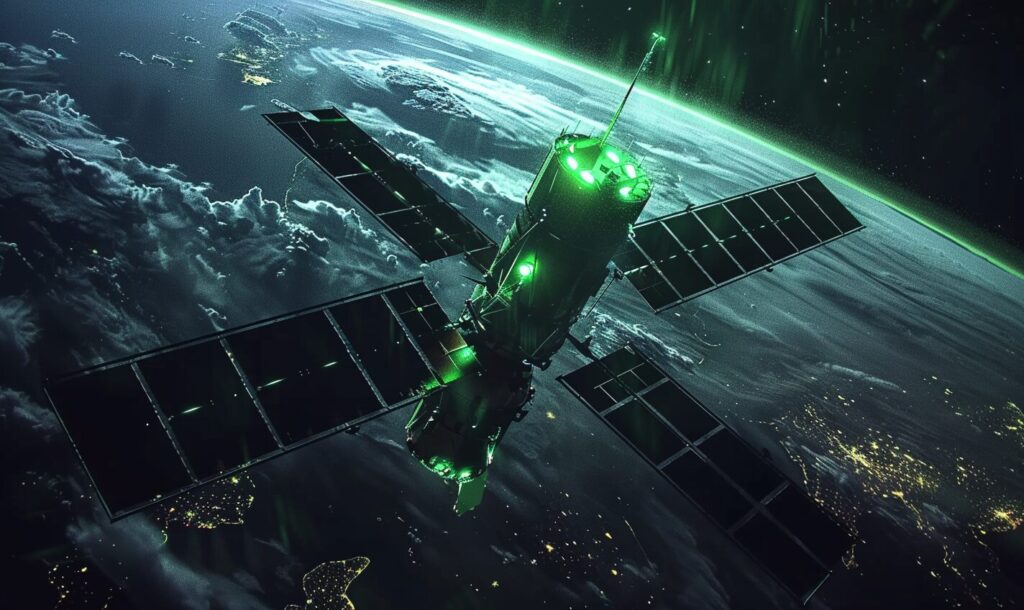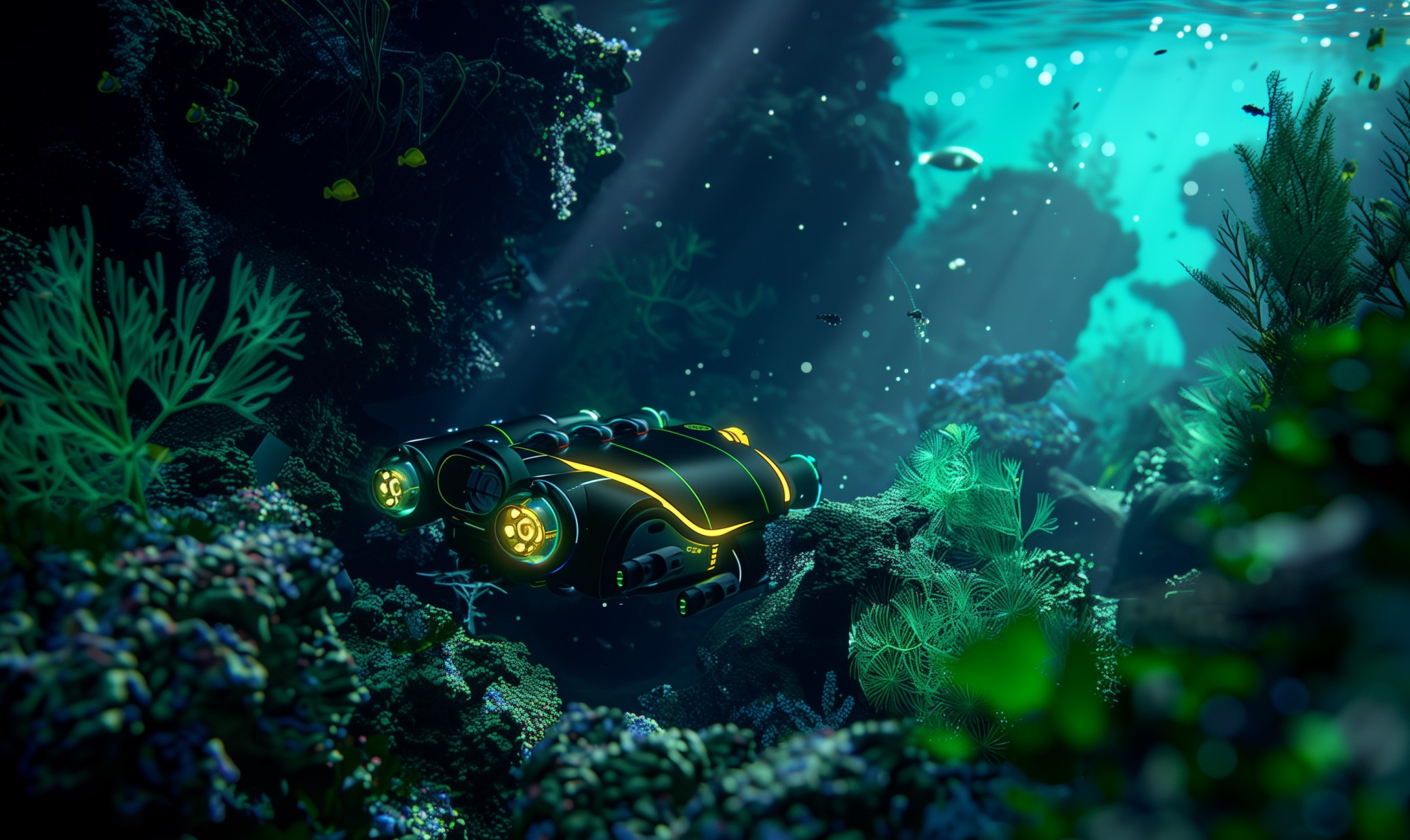How much of the ocean is unexplored? “Unexplored ocean” means areas not thoroughly studied. The sea produces more oxygen and exploring it reveals new species and helps environmental efforts like climate monitoring and biodiversity assessment.
The Depths of the Ocean
The ocean covers 71% of Earth and has distinct depth zones. Exploring these zones poses challenges like pressure, lack of light and extreme conditions, requiring specialized technology and careful planning.
- Sunlight zone: The upper layer where sunlight penetrates, supporting diverse marine life. Traditional submarines and vehicles suit this zone but may have depth limitations.
- Twilight zone: Deeper, limited sunlight and unique creatures adapted to low light conditions. Specialized equipment and strategies are needed to capture clear images and data in low-light conditions.
- Midnight zone: Dark and deep, no sunlight reaches, with bioluminescent organisms adapting to extreme pressure. It requires advanced technology to withstand pressure and specialized equipment for studying organisms adapted to darkness.
- Abyssal zone: Extreme depths, low temperatures and high pressure, hosting unusual life forms. Deep-sea explanation tools must withstand immense pressure and researchers face difficulties in studying life adapted to harsh conditions,
- Hadal zone: The ocean’s deepest parts, including trenches with intense pressure, cold temperatures and unique challenges. Few vehicles can withstand
The Current State of Sea Exploration
Ocean exploration has a rich history with various methods and technologies that contribute to people’s understanding of marine ecosystems, geology and climate. Ongoing technological advancements continue to enhance the researchers’ ability to explore and study the vast and complex environment.
Historically, ships like the HMS Challenger conducted early oceanographic research in 1872 – 1876. Modern research vessels like NOAA’s Okeanos Explorer continue to facilitate deep-sea exploration.
In 1930, Bathysphere pioneered deep-sea exploration with manned submersibles. Alvin and other remotely operated submersibles allow scientists to reach extreme depths.
Early ROVs in 1988, like the Jason Jr., enabled scientists to explore deep-sea environments. Advanced ROVs such as the remotely operated vehicle SuBastian are widely used for marine research.
Autonomous Underwater Vehicles (AUVs) in early 2033 were used for independent data collection. Modern AUVs like the Hugin are crucial in mapping and studying the ocean floor.
Technology Advancements Driving Ocean Exploration
Throughout their lives, 56% of porpoises, whales and dolphins have consumed microscopic particles. Technological advancements contribute to safer, more efficient and more informative exploration, opening new possibilities for understanding and preserving the vast and complex marine environment:
- Remotely operated vehicles (ROVs): Enhanced maneuverability, high-definition cameras and advanced sampling tools. It allows researchers to explore deep-sea environments with precision and collect high-quality data.
- Autonomous underwater vehicles (AUVs): Improved navigation systems, longer endurance and increased sensor capabilities. AUVs can autonomously survey large areas, map the ocean floor and collect data without constant human intervention.
- Satellite technology: Advanced satellite sensors for monitoring and mapping. It provides real-time sea surface temperature and currents data and helps track large-scale oceanic phenomena.
- Telepresence technology: High-bandwidth communication systems enabling real-time exploration from remote locations. Scientists can participate virtually in deep-sea missions, enhancing collaboration and knowledge-sharing
- Advanced sonar systems: Multibeam and sidescan sonar technologies for detailed seafloor mapping. Improved mapping accuracy and identification of underwater features, aiding in geological and biological studies.
- Deep-sea submersibles: Development of more robust and capable submersibles. It enables scientists to explore extreme depths, such as trenches and conduct in-depth studies of ecosystems.
Notable Missions and Discoveries
People always ask, “How much of the ocean is unexplored?” Most of the ocean, over 80%, hasn’t been explored or seen by humans — more than what people know about the moon Mars.
The sea has tall mountains and deep canyons, even more profound than Mount Everest, the world’s tallest mountain. The Atlantic Ocean is shallower because of continental shelves. The whole ocean is 3,720 meters or around 12,200 feet deep on average. Ocean missions exemplify the dedication to marine exploration, leading to groundbreaking discoveries and advancements in our knowledge of the deep-sea environment:
- Deepsea Challenger (2012): James Cameron’s solo dive to the Challenger Deep, the deepest point in the Mariana Trench. Cameron explored depths of nearly 36,070 feet, contributing valuable data about the trench’s geology and biology.
- NOAA’s Okeanos explorer: Ongoing since 2008, this research vessel has systematically explored unknown marine areas—numerous discoveries of new species, geological features and insights into deep-sea ecosystems.
- Hadal ecosystem studies (HADES) project: Focused on studying the Hadal zone, the HADES project explores deep-sea trenches. Identifying new species and insights into the unique adaptations of life in extreme marine environments.
- Nereus Challenger Deep Dive (2014): The autonomous vehicle Nerus reached the Challenger Deep. They collected samples and data, contributing to a better understanding of deep-sea ecosystems and geology.
Mapping the Uncharted
Ocean mapping is crucial for exploiting unknown areas underwater. Detailed seafloor maps uncover hidden features like undersea mountains and canyons, revealing Earth’s dynamic process and how much of the marine is unexplored.
These maps also help understand and protect marine life by identifying different habitats and supporting conservation efforts. Additionally, they guide responsible resource exploration, minimizing environmental impact. In the context of climate change, ocean mapping monitors seafloor changes. It contributes to understanding the relationship between sea processes and climate.
Moreover, accurate maps improve navigation safety and reduce the risk of accidents at the sea. Scientifically, these maps guide researchers to unexplored areas, facilitating discoveries in marine biology, geology and environmental science.
How to Map the Ocean
Exploring unexplored sea areas has an excellent potential for finding new species. These areas have unique conditions supporting life adapted to extreme environments.
Advanced technologies help scientists reach these depths, discover new habitats and reveal unknown species. This enhances people’s understanding of biodiversity and shows how life adapts in the deep and mysterious parts of the sea.
The deep-seabed is believed to host 500,000 to 10 million species. Yet, much of the ocean remains unexplored, with 91% of marine species still unknown. The sea holds 99% of habitable space — the most extensive ecosystem. The main ocean basins house 94% of global wildlife and 97% of Earth’s water.
Recent discoveries have revealed fascinating and unknown species, such as the “ninja lantern shark” off Central America, a bioluminescent shark with dark coloring for deep-sea camouflage. Another found is the “yeti crab” near Pacific Ocean hydrothermal vents, known for its hairy appearance and unique way of sustaining itself with bacteria.
Ocean mapping uses different methods and technologies to understand the seafloor and features:
- Multibeam sonar: Sends multiple sonar beams to measure depth and create detailed seafloor maps.
- Satellite altimetry: Satellites measure sea surface height to map currents and bathymetry.
- Single-beam sonar: Send a single sound pulse to measure shallow-water seafloor topography.
- Acoustic Doppler profilers: Measures water velocity using sound waves, helping understand currents.
- Satellite remote sensing: Satellites capture data on sea surface temperature and other oceanographic parameters.
- Lidar: Uses laser light to create precise topographic maps of coastal areas.
The Future of Ocean Exploration
Future ocean exploration is getting a boost from new technologies. These excellent techniques make exploration smarter, more extended and eco-friendly:
- Underwater drones: Compact, remote-controlled vehicles for efficient underwater exploration. They’re smaller and better at navigating tricky sunken spots.
- Autonomous underwater vehicles (AUVs): Unmanned vehicles that collect data independently. They navigate better, last longer and contain more detailed data.
- Ocean gliders: Self-moving vehicles for long exploration. They explore for a longer time and use less energy.
- Swarm robotics: Teamwork with small underwater robots. Efficient data collection with synchronized efforts.
- Biomimicry: Inspired by nature’s designs. Robots act like marine creatures for better performance.
- Telepresence technology: High-tech communication connecting researchers to underwater vehicles. Scientists can join exploration from afar, making teamwork easier.
Working together internationally is crucial for exploring uncharted waters. The sea is vast and collaboration allows countries to share resources and expertise, making exploration more efficient.
About one-third of the world’s roughly 2.4 billion people live near an marine coast. All human life relies on the oxygen and freshwater the sea provides.
Preserving crucial ecosystems like mangroves, seagrasses and salt marshes may help store over 1.4 billion tons of carbon emissions yearly by 2050 if protected and restored.
Different countries bring unique knowledge and technology, contributing to a more complete understanding of its complexities. Global challenges like climate change require collective efforts and collaboration helps develop sustainable solutions.
By sharing advanced technology and data, countries can reduce costs and make ocean exploration more accessible. Collaboration also promotes preserving marine life, data sharing and peaceful cooperation, ensuring the health and diversity of the world’s seas.
How Much of the Ocean is Unexplored
So, how much of the ocean is unexplored? Most of the sea is still unknown, harboring mysteries we have yet to uncover. Exploring and safeguarding this vast ecosystem is not just a scientific goal but a vital responsibility for the health of our planet and future generations.
Recent Stories
Follow Us On
Get the latest tech stories and news in seconds!
Sign up for our newsletter below to receive updates about technology trends














